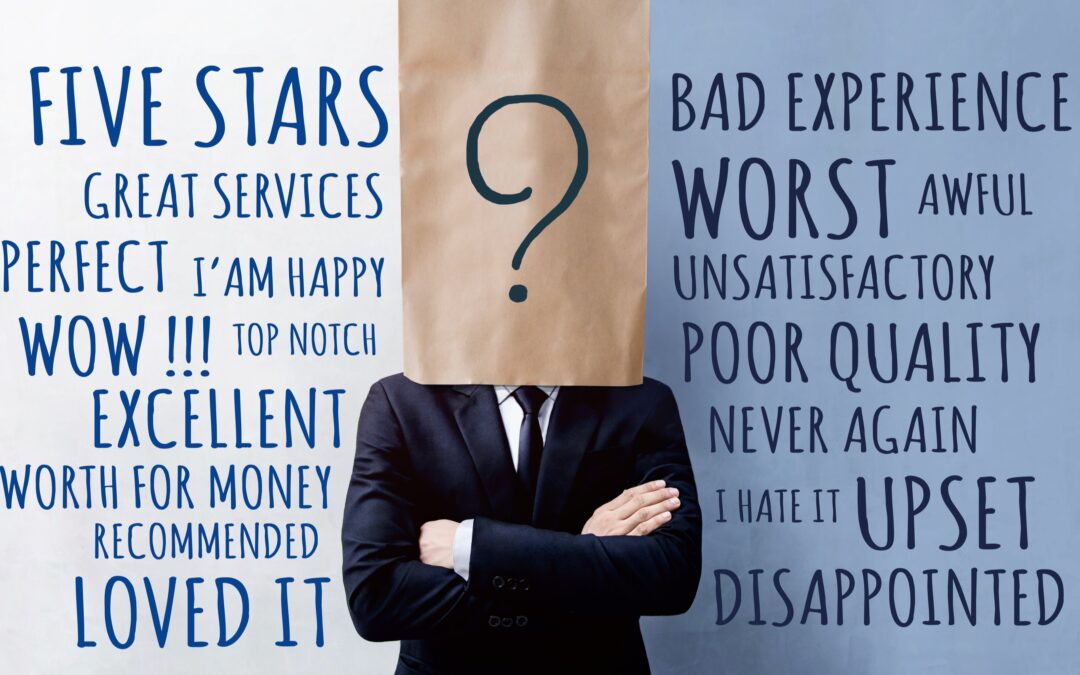People read reviews before they buy just about anything. Whether it’s a pair of shoes, a new restaurant, or even a local plumber, most folks check what others are saying. Reviews don’t just give others an idea of what your business is like — they shape your reputation. The thing is, even a few bad reviews can start to quietly drag your business down without much warning. You might not even see the effect right away, but over time, those poor opinions can slow your growth.
That’s why it’s worth taking a closer look at your online feedback. A few unhappy customers venting online might seem small, but if those posts stick around and pile up, people will notice. And if they don’t see proof that others are happy with your work, many just won’t take the chance. Below are five clear signs that your online reviews could be holding your business back, so you know what to watch for and what it might be costing you.
1. Negative Reviews Outnumber Positive Ones
When someone clicks through to your business on a review site or search result, the first thing they see is your average rating. If it’s weighed down by too many low-scoring comments, even your best work can get ignored. It only takes a quick glance for people to decide whether they’ll consider you or keep scrolling.
A few rough reviews are normal, but too many in a row can paint the wrong picture. New visitors don’t know the full story. They just know what they see on the screen. And if your positive reviews are few and far between, there’s not much balance to help earn their trust.
Here’s what can happen when the scales tip the wrong way:
– People assume the worst and never give you a shot
– Existing customers start second-guessing their loyalty
– Word-of-mouth slows down because folks are unsure
If customers are mostly silent after a good experience, it puts all the spotlight on the rare unhappy ones. That’s a problem, but fixing it isn’t about deleting bad comments or writing fake reviews. It’s about getting more of your happy clients to speak up. The more positive voices there are, the less weight the negative ones carry.
2. Dropping Sales Despite Good Traffic
Picture this: your website visits are steady, your ads are running, and people are finding you — but nothing’s really converting. Leads feel cold. Calls go unanswered. Cart checkouts drop midway. It’s frustrating, especially when everything else seems to be working fine.
Often, this slowdown isn’t coming from your design or product — it’s coming from hesitation. And that hesitation can trace right back to bad reviews floating around online. Even if people like your offer or service, a handful of critical posts can shake their confidence just enough to stop them from moving forward.
Here’s how shaky reviews can stall good traffic:
– People find your site, then Google your name followed by the word “reviews”
– They read one or two bad stories and feel unsure
– They bounce before giving you a chance
Even worse, some users might never visit your site at all. They read the reviews first, get turned off, and look somewhere else. You might be spending money bringing folks in, only for negative feedback to drive them away again.
An example would be a local cleaning company that had great SEO rankings and strong website traffic. But when people searched the name online, the first review that popped up was a harsh complaint that hadn’t been addressed. Customers assumed that silence meant agreement. Without knowing the full truth, many moved on to somebody else, even though the company actually did great work.
3. Lowered Search Engine Rankings
Search engines look at reviews too. When there’s a steady stream of poor ratings or a lack of fresh opinions, it can affect how visible your business is. You might still appear, but not as high up, and that change can quietly hurt your bottom line.
Bad reviews can tell search engines that people aren’t having a good experience. If your business gets talked about in a negative light or gets ignored altogether on review sites, search engines may assume it’s less valuable to users. And that means fewer people will even find your name when they go searching for services like yours.
Let’s break down what starts to slip:
– Your Google Business Profile might not show up in local packs
– Map rankings can slide down without enough positive feedback
– Lowered clicks and site visits lead to even less exposure
This isn’t about chasing perfect scores either. It’s about creating a pattern of trust online. Search engines want to highlight helpful, reliable businesses. If your reviews suggest doubt, it hurts your odds of climbing to the top spots. That’s why it’s worth paying attention not just to what’s said about you, but how often, how recently, and where it’s posted.
4. Increasing Customer Complaints
When customer complaints start stacking up, it usually means people are feeling unheard. A spike in negative messages, whether through social media comments, emails or formal complaints, often shows there’s something your business is missing. But here’s the thing most owners don’t realise — those customers are probably mirroring what others have already posted in reviews online.
If folks read bad reviews and then experience the same issue, they feel even more frustrated. The problem doesn’t feel like a one-off. It feels ignored. And that’s when they start speaking up louder.
Customer complaints tied to online reviews can show up in a few clear ways:
– Repeated mention of the same issues in both private and public feedback
– Shaky service expectations set by unchecked online opinions
– Frustration from customers who realise their problems aren’t being addressed
These patterns create a negative cycle. If no one responds or makes changes, the complaints keep coming. People feel like they’re shouting into the void, and that sets the tone for more harsh reviews. To turn things around, businesses need to listen deeper and act sooner. That doesn’t always mean massive changes, but even small tweaks based on common concerns can shift customer perception.
5. Difficulty Attracting New Talent
Online reviews don’t just impact buyers — they affect hiring too. When job seekers are deciding where to apply, one of the first things they check is a company’s online reputation. Sites with public feedback about employee experiences now sit right beside customer-focused review platforms. If there’s a lot of negativity circulating, your team might struggle to grow.
Even if your business offers a great work environment, reviews that hint at unhappy customers can make the whole place feel unstable from the outside. People want to be part of a business where customers are happy, staff feel valued, and the brand carries good energy. Seeing the opposite isn’t appealing.
Here’s what could get in the way during the hiring process:
– Negative reviews presenting your business as disorganised or difficult
– Potential hires concerned about drama or poor communication
– Interviews getting turned down after a quick Google search
If a business has been around for a while but keeps losing applicants, it’s worth checking what kind of online feedback exists. One unhappy customer might be forgettable, but a steady wave of complaints or unresolved issues can make a bigger impact than expected. Fixing your review presence can improve how you’re seen by the public, but also how you’re seen by future employees.
How to Turn Things Around
The good news is, even if reviews have taken a negative turn, it’s possible to shift the conversation with a few key moves. You won’t change the past, but you can start improving how people see your business now and over time.
1. Ask happy customers to share their thoughts
Don’t wait for reviews to show up on their own. After a solid service or purchase, gently ask happy customers to leave a quick comment online. Some might not think about doing it unless they’re asked. If it becomes part of your regular process, over time the positive feedback will speak for itself.
2. Handle negative reviews with a level head
It’s tempting to ignore or delete a harsh review, but that rarely solves anything. A calm, thoughtful reply shows other readers that you’ve noticed the issue and care enough to follow up. You don’t need to go into detail — just thanking them for the message and offering to talk privately can show that you’re listening.
3. Keep an eye on what’s being said
Set aside time weekly or even monthly to scan major platforms where your business is reviewed. Watching for trends in feedback can tell you what’s going well and what might need adjusting before the same issue pops up again.
4. Turn comments into tools for growth
If certain feedback seems to come up again and again, consider taking some action based on it. Whether it’s updating your reply time, changing how you communicate pricing, or training staff a little differently, these small changes can make a big difference down the line.
Reputation Shapes Growth
Your online reviews offer more than just opinions — they hold real weight over where your business heads next. If even one of the signs above rings a bell, it might be time to rethink how reviews are being handled and what they say about your brand. Clearing up that digital first impression can improve buyer trust, reduce missed sales, and show future hires that your business is working to grow and improve.
Every business hits bumps along the way, but those moments also bring chances to learn. Shifting your focus from defence to direction means putting energy into what your reputation could be, not just what it’s been. Making review health a regular part of your business plan lets you stay ahead of problems before they snowball — and lets your best customer experiences shine through.
Clear up your digital reputation and help your business thrive by focusing on what really matters. With effective strategies for managing online reviews and maintaining a strong presence, businesses can boost buyer trust and attract quality talent. Learn how BrandCommand’s SEO and social media marketing services can give you the edge you need. Let our expert team support you in building a positive online image for lasting business growth.


